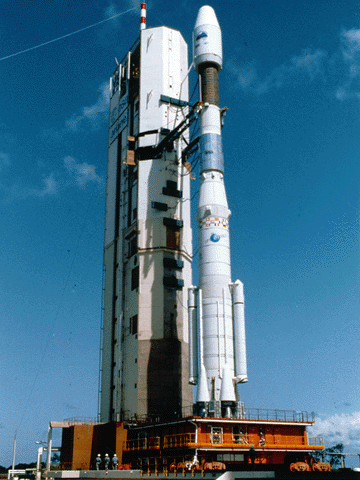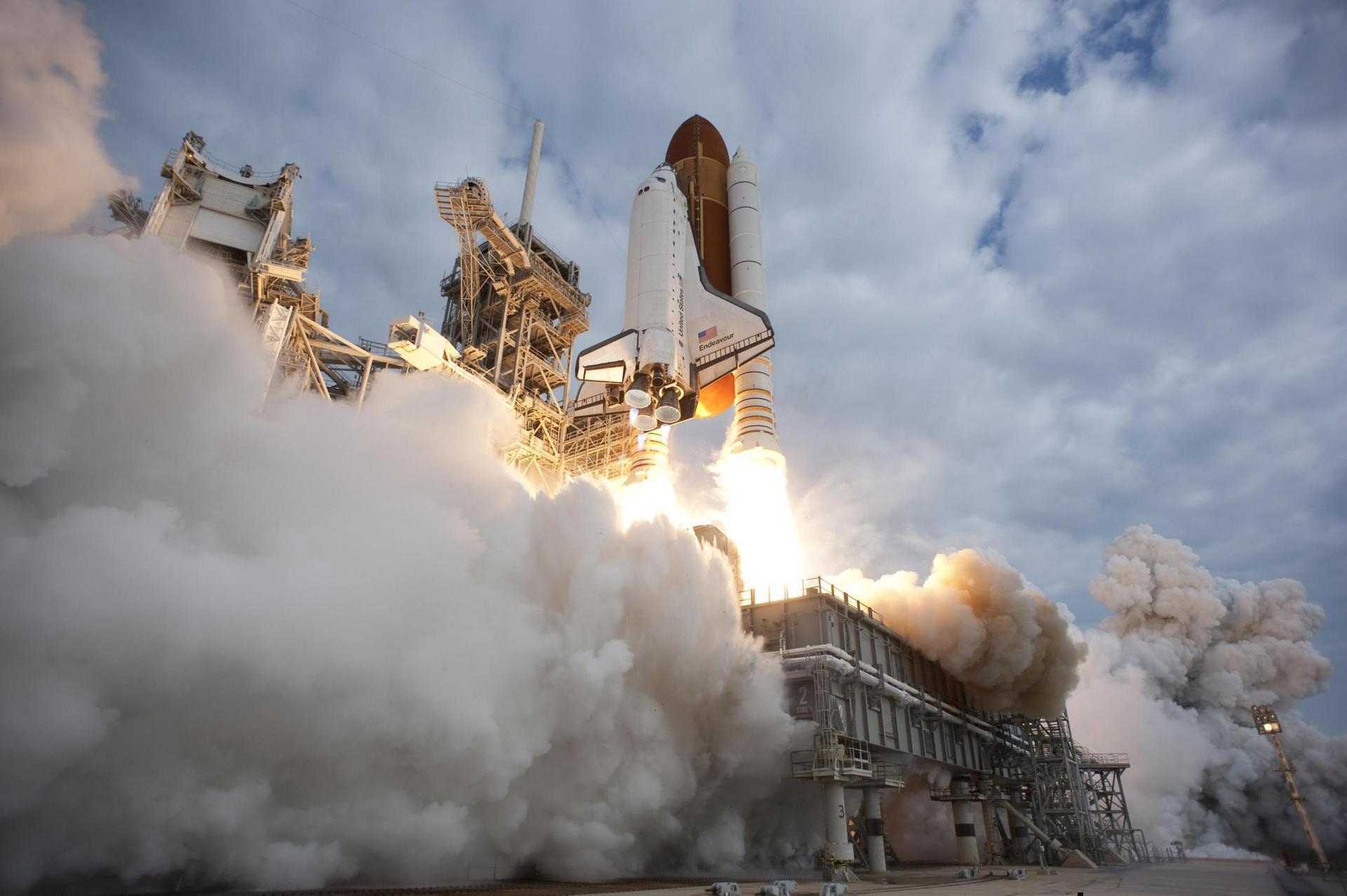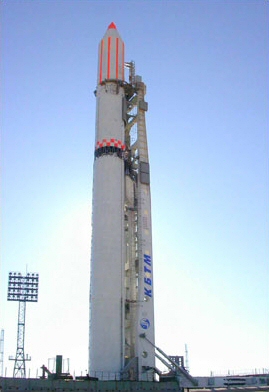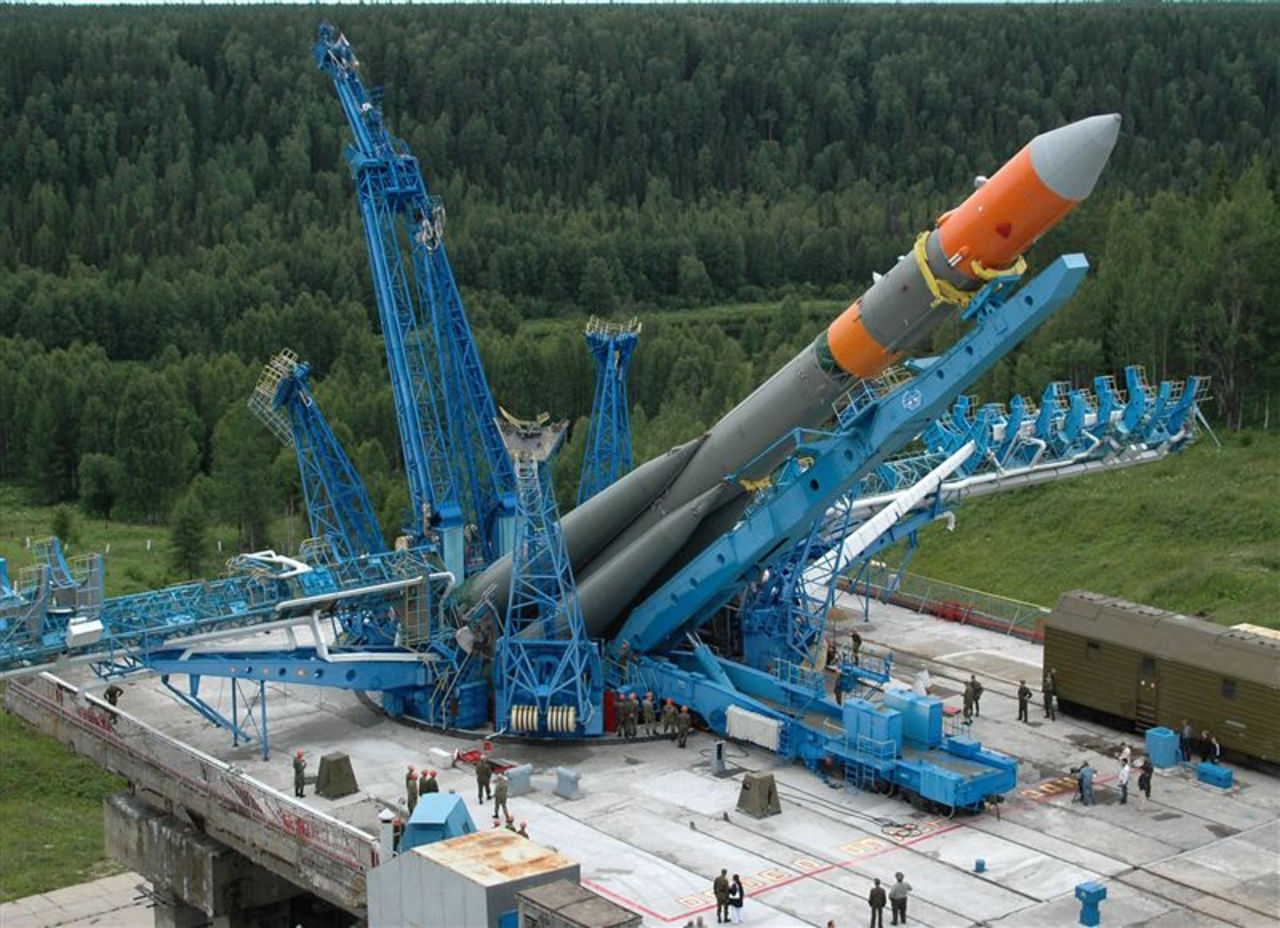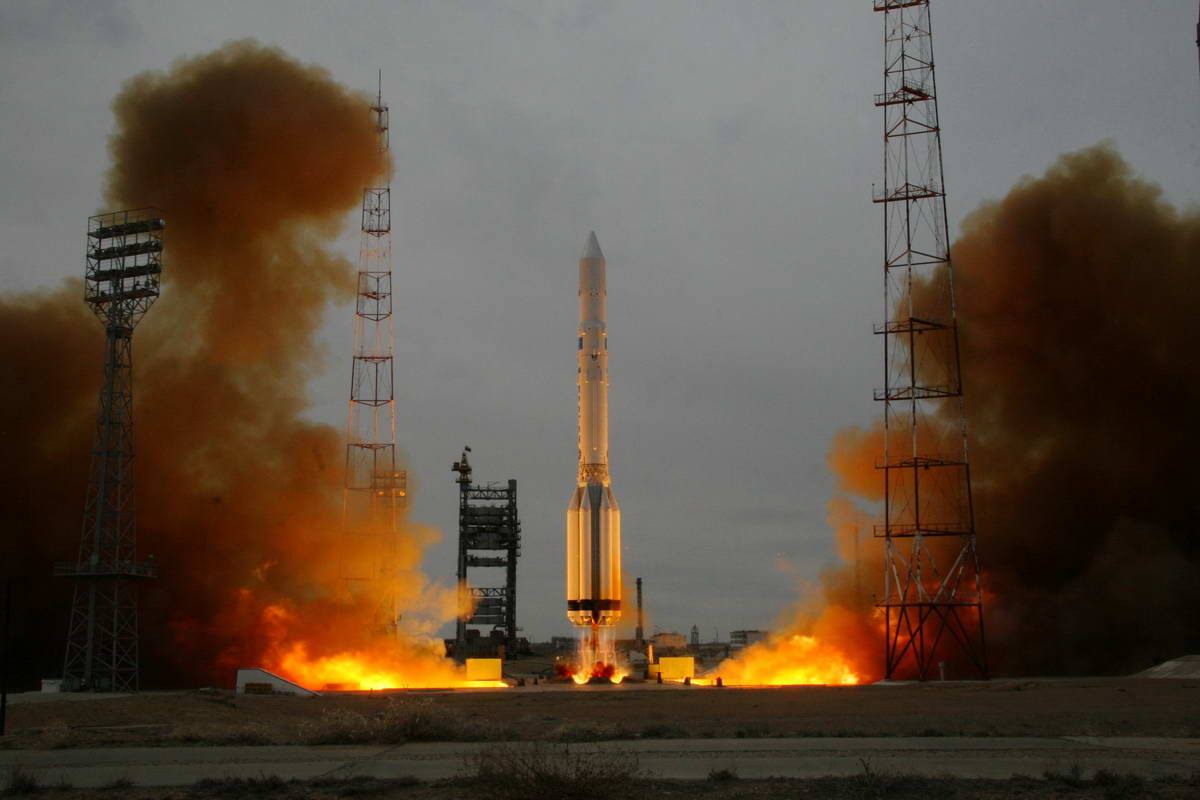Previous Spaceflight Launches
Filter by Agency, Locations or Vehicles
Show All LaunchesDelta 7420-10C | Globalstar 24,27,53,54
McDonnell Douglas | United States of AmericaCape Canaveral SFS, FL, USA
Aug. 17, 1999, 4:37 a.m.
Status: Launch Successful
Mission:
The Globalstar global mobile communications network offers global, digital real time voice, data and fax via a constellation of 48 minisatellites. The constellation operates in a 1410 km orbit inclined at 52 degrees, and will also have 8 spares. The satellites were built by Space Systems Loral and Alenia Aerospazio in Rome, Italy.
Low Earth OrbitAriane 42P | Telkom 1
Aérospatiale | FranceGuiana Space Centre, French Guiana
Aug. 12, 1999, 10:52 p.m.
Delta 7420-10C | Globalstar 26,28,43,48
McDonnell Douglas | United States of AmericaCape Canaveral SFS, FL, USA
July 25, 1999, 7:46 a.m.
Status: Launch Successful
Mission:
The Globalstar global mobile communications network offers global, digital real time voice, data and fax via a constellation of 48 minisatellites. The constellation operates in a 1410 km orbit inclined at 52 degrees, and will also have 8 spares. The satellites were built by Space Systems Loral and Alenia Aerospazio in Rome, Italy.
Low Earth OrbitSpace Shuttle Columbia OV-102 | STS-93
National Aeronautics and Space Administration | United States of AmericaKennedy Space Center, FL, USA
July 23, 1999, 4:31 a.m.
Status: Launch Successful
Mission:
STS-93 marked the 95th launch of the Space Shuttle, the 26th launch of Columbia, and the 21st night launch of a Space Shuttle. Eileen Collins became the first female shuttle Commander on this flight. Its primary payload was the Chandra X-ray Observatory.
Low Earth OrbitZenit-2 | Okean-O
Yuzhnoye Design Bureau | UkraineBaikonur Cosmodrome, Republic of Kazakhstan
July 17, 1999, 5:38 a.m.
Status: Launch Successful
Mission:
Okean-O was a joint Ukrainian and Russian remote sensing satellite program designed as a follow on to the Okean-O1 series. It was designed to gather remote sensing data crucial for research of natural resources of the Earth and world oceans. The mission also included ecological monitoring and management of externalities (weather forecast, hazards prevention).
Polar OrbitSoyuz U | Progress M-42
Russian Federal Space Agency (ROSCOSMOS) | RussiaBaikonur Cosmodrome, Republic of Kazakhstan
July 16, 1999, 4:37 p.m.
Delta 7420-10C | Globalstar 30,32,35,41
McDonnell Douglas | United States of AmericaCape Canaveral SFS, FL, USA
July 10, 1999, 8:45 a.m.
Status: Launch Successful
Mission:
The Globalstar global mobile communications network offers global, digital real time voice, data and fax via a constellation of 48 minisatellites. The constellation operates in a 1410 km orbit inclined at 52 degrees, and will also have 8 spares. The satellites were built by Space Systems Loral and Alenia Aerospazio in Rome, Italy.
Low Earth OrbitMolniya-M | Molniya-3 63L
Russian Space Forces | RussiaPlesetsk Cosmodrome, Russian Federation
July 8, 1999, 8:45 a.m.
Proton-K/Briz-M | Raduga 34
Khrunichev State Research and Production Space Center | RussiaBaikonur Cosmodrome, Republic of Kazakhstan
July 5, 1999, 1:32 p.m.
Delta II | FUSE
United Launch Alliance | United States of AmericaCape Canaveral SFS, FL, USA
June 24, 1999, 3:44 p.m.
Status: Launch Successful
Mission:
FUSE (Far Ultraviolet Spectroscopic Explorer) represented the next generation, high-orbit, ultraviolet space observatory covering the wavelength range of 90.5-119.5 nm. The primary objective of FUSE was to use high-resolution spectroscopy at far ultraviolet wavelengths to study the origin and evolution of the lightest elements (hydrogen and deuterium) created shortly after the Big Bang, and the forces and processes involved in the evolution of galaxies, stars and planetary systems.
Low Earth Orbit
